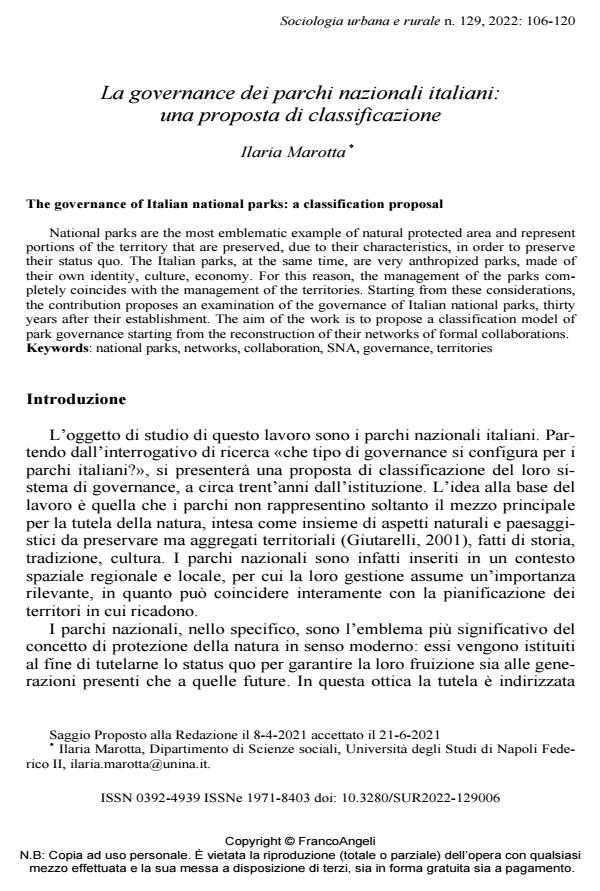The governance of Italian national parks: a classification proposal
Journal title SOCIOLOGIA URBANA E RURALE
Author/s Ilaria Marotta
Publishing Year 2022 Issue 2022/129
Language Italian Pages 15 P. 106-120 File size 240 KB
DOI 10.3280/SUR2022-129006
DOI is like a bar code for intellectual property: to have more infomation
click here
Below, you can see the article first page
If you want to buy this article in PDF format, you can do it, following the instructions to buy download credits

FrancoAngeli is member of Publishers International Linking Association, Inc (PILA), a not-for-profit association which run the CrossRef service enabling links to and from online scholarly content.
National parks are the most emblematic example of natural protected area and represent portions of the territory that are preserved, due to their characteristics, in order to preserve their status quo. The Italian parks, at the same time, are very anthropized parks, made of their own identity, culture, economy. For this reason, the management of the parks completely coincides with the management of the territories. Starting from these considerations, the contribution proposes an examination of the governance of Italian national parks, thirty years after their establishment. The aim of the work is to propose a classification model of park governance starting from the reconstruction of their networks of formal collaborations.
Keywords: national parks, networks, collaboration, SNA, governance, territories
Ilaria Marotta, La governance dei parchi nazionali italiani: una proposta di classificazione in "SOCIOLOGIA URBANA E RURALE" 129/2022, pp 106-120, DOI: 10.3280/SUR2022-129006